Sure Shot Questions: Theory of Consumer Behaviour | Economics Class 11 - Commerce PDF Download
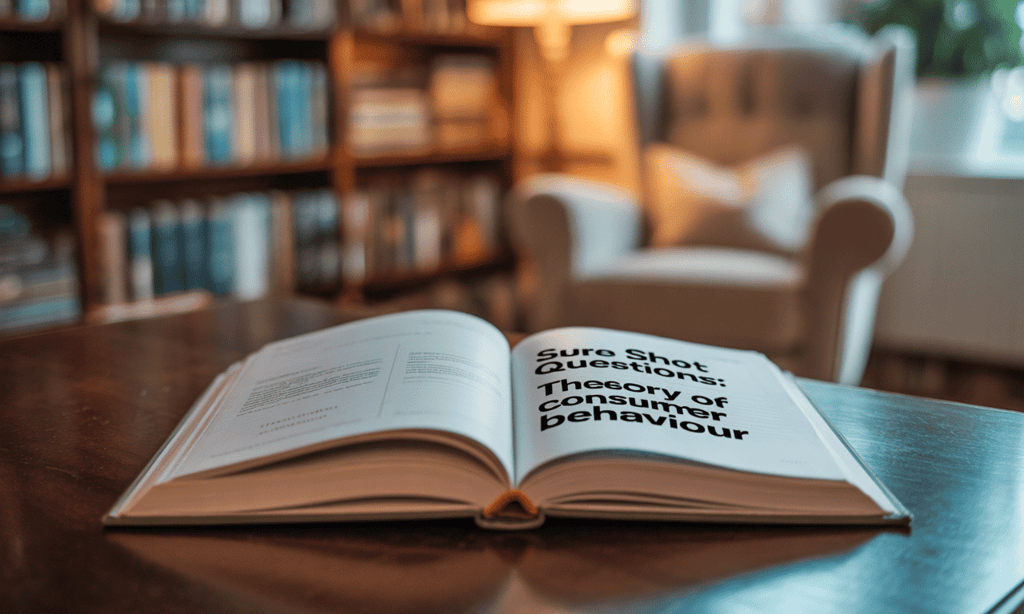
Based on a careful analysis of the previous years' questions and trends, we've put together a list of questions that are most likely to appear in the Class 11 Economics exam. These predictions aren’t just guesses—they’re based on how often these questions show up and how CBSE usually frames its papers.
Q1: Define utility and marginal utility.
Ans: Utility: Utility is the satisfaction or benefit a consumer derives from consuming goods or services. Marginal Utility (MU): MU is the additional satisfaction gained from consuming one more unit of a good, calculated as MUn = TUn - TUn-1, where TU is total utility. For example, if one apple gives 10 units of satisfaction and a second apple adds 8 units, MU of the second apple is 8.
Q2: Explain the relationship between total utility (TU) and marginal utility (MU).
Ans: TU is the sum of MU from each unit consumed (TU = ∑MU). TU increases as long as MU is positive. When MU is zero, TU reaches its maximum. If MU becomes negative, TU decreases. For example, if MU of the first three chocolates is 10, 8, and 5, TU after three chocolates is 23 (10+8+5).
Q3: State and explain the Law of Diminishing Marginal Utility.
Ans: The Law of Diminishing Marginal Utility states that as a consumer consumes more units of a good, the additional satisfaction (MU) from each extra unit decreases. For example, the first slice of pizza may yield 10 units of utility, the second 8 units, and the third 5 units, showing a decline in MU as consumption increases.
Q4: Differentiate between cardinal and ordinal utility.
Ans: Cardinal Utility: Utility is measurable in numerical units (e.g., 10 utils from one apple). It assumes utility can be quantified. Ordinal Utility: Utility is ranked based on preference, not measured numerically (e.g., preferring tea over coffee). It focuses on the order of satisfaction, used in indifference curve analysis.
Q5: What is the Law of Equi-Marginal Utility?
Ans: The Law of Equi-Marginal Utility states that a consumer maximizes satisfaction by allocating income such that the marginal utility per unit of money spent is equal across goods. For two goods X and Y, equilibrium occurs when MUX/PX = MUY/PY. For example, if MU of X is 20 at ₹2 and MU of Y is 30 at ₹3, then 20/2 = 30/3 = 10, indicating equilibrium.
Q6: Define budget set and budget line. What causes a change in the budget set?
Ans: Budget Set: The set of all possible combinations of two goods a consumer can afford given their income and prices (PXQX + PYQY ≤ M). Budget Line: A line showing combinations of two goods that exhaust the consumer’s income (PXQX + PYQY = M). Changes in Budget Set: Caused by (i) change in income, (ii) change in price of one good, or (iii) change in prices of both goods.
Q7: Explain the properties of an indifference curve.
Ans: Properties of an indifference curve:
(i) Downward Sloping: More of one good means less of another to maintain the same satisfaction.
(ii) Convex to Origin: Due to diminishing Marginal Rate of Substitution (MRS).
(iii) Never Intersect: Each curve represents a unique satisfaction level.
(iv) Higher Curve, Higher Satisfaction: A higher curve indicates more of at least one good.
(v) Not Necessarily Parallel: MRS varies across curves.
Q8: What is the Marginal Rate of Substitution (MRS)? Explain with an example.
Ans: MRS is the rate at which a consumer is willing to substitute one good for another while maintaining the same level of satisfaction (MRS = ΔY/ΔX). Example: On an indifference curve, if a consumer gives up 2 units of good Y to gain 1 unit of good X, MRS = 2Y/1X = 2, indicating they are willing to sacrifice 2 units of Y for 1 unit of X.
Q9: Explain consumer’s equilibrium using indifference curve analysis.
Ans: Consumer’s equilibrium is achieved where the budget line is tangent to the highest possible indifference curve, maximizing satisfaction. Conditions: (i) Slope of the budget line (PX/PY) equals the MRS (MUX/MUY). (ii) The indifference curve is convex to the origin (diminishing MRS). At this point, the consumer cannot reach a higher curve (beyond income) or a lower curve (less satisfaction).
Q10: Describe the five degrees of price elasticity of demand with examples.
Ans:
(i) Perfectly Elastic (Ed=∞): A small price change causes infinite demand change (e.g., identical products in a competitive market).
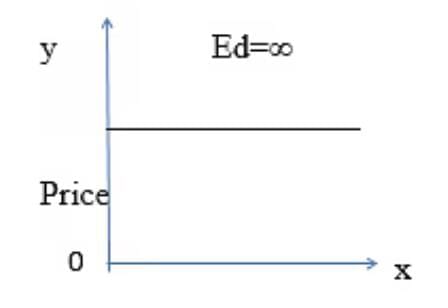
(ii) Perfectly Inelastic (Ed=0): Demand unchanged despite price change (e.g., essential medicines).
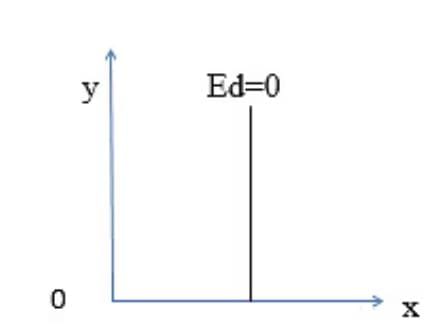
(iii) Unitary Elastic (Ed=1): % change in quantity equals % change in price (e.g., some luxury goods).
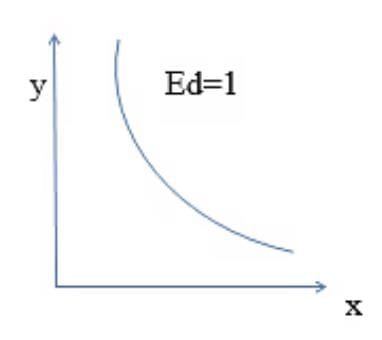
(iv) Relatively Elastic (Ed>1): % change in quantity exceeds % change in price (e.g., branded clothing).
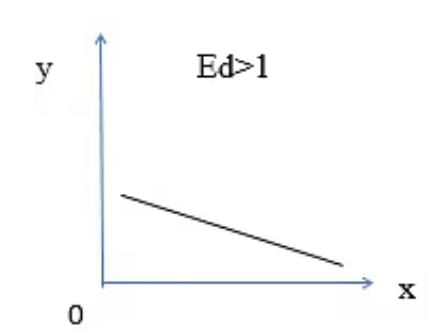
(v) Relatively Inelastic (Ed<1): % change in quantity less than % change in price (e.g., salt).
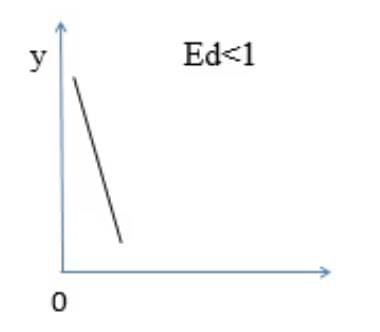 Q11: Explain four factors affecting the price elasticity of demand.
Q11: Explain four factors affecting the price elasticity of demand.
Ans:
(i) Availability of Substitutes: More substitutes increase elasticity (e.g., tea vs. coffee).
(ii) Proportion of Income Spent: High expenditure share makes demand elastic (e.g., electronics).
(iii) Habits: Habitual goods have inelastic demand (e.g., tobacco).
(iv) Time Period: Longer periods allow more elastic demand as consumers adjust (e.g., fuel).
Q12: A consumer buys 50 units of a good at ₹4 per unit. When the price falls by 25%, demand rises to 100 units. Calculate the price elasticity of demand.
Ans: Initial price (P0) = ₹4, New price (P1) = ₹4 - (25% of 4) = ₹3, Initial quantity (Q0) = 50, New quantity (Q1) = 100.
Ed = (ΔQ/ΔP) × (P0/Q0) = [(100-50)/(3-4)] × (4/50) = (50/-1) × (4/50) = -50 × 0.08 = 4.
Price elasticity of demand = 4 (elastic).
Q13: If the price elasticity of demand for wheat is 1, and a household demands 40 kg at ₹1 per kg, what price will lead to a demand of 36 kg?
Ans: Ed = 1, Q0 = 40 kg, Q1 = 36 kg, P0 = ₹1.
Ed = (%ΔQ/%ΔP).
%ΔQ = [(36-40)/40] × 100 = -10%.
1 = (-10/%ΔP), %ΔP = -10%.
New price = P0 × (1 + %ΔP/100) = 1 × (1 + 10/100) = ₹1.10.
New price = ₹1.10 per kg.
Q14: The quantity demanded of a good at ₹10 per unit is 40 units, with a price elasticity of -2. If the price falls by ₹2, calculate the new quantity demanded.
Ans: Ed = -2, P0 = ₹10, P1 = ₹10 - ₹2 = ₹8, Q0 = 40.
%ΔP = [(8-10)/10] × 100 = -20%.
Ed = (%ΔQ/%ΔP), -2 = (%ΔQ/-20), %ΔQ = 40%.
New quantity = Q0 × (1 + %ΔQ/100) = 40 × (1 + 40/100) = 40 × 1.4 = 56 units.
Q15: Assertion (A): The budget line is downward sloping. Reason (R): To consume more of one good, a consumer must sacrifice some units of another good due to limited income.
Ans: (a) Both Assertion (A) and Reason (R) are true, and Reason (R) is the correct explanation of Assertion (A). The budget line slopes downward as increased consumption of one good reduces the ability to consume another, given fixed income.
|
59 videos|222 docs|43 tests
|
FAQs on Sure Shot Questions: Theory of Consumer Behaviour - Economics Class 11 - Commerce
| 1. What are the key principles of consumer behavior theory? |  |
| 2. How do psychological factors influence consumer behavior? |  |
| 3. What role does culture play in consumer behavior? |  |
| 4. What is the concept of the consumer decision-making process? |  |
| 5. How do external factors affect consumer behavior? |  |
















